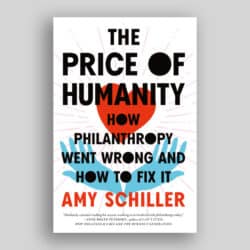Regulating Charities: The Inside Story, Myles McGregor-Lowndes and Bob Wyatt, eds, New York, Routledge, 2017, ISBN 978-1-315563-92-3
Regulating Charities: The Inside Story is a text that is not about the regulation of charities; it is about the inside story(ies) that illustrates why there is no regulation of charities. This comment is not a criticism of the book, the editors, or the authors of a series of interesting narratives and analyses of the last quarter century or so with respect to charities and the law in the five eyes of charity law – Canada, the United Kingdom (England and Wales), the United States, Australia, and New Zealand.
But first, a bit more about the text and its context, how it developed and its contents. Regulating Charities is a publication of Routledge and part of the Routledge Studies in the Management of Voluntary and Non-Profit Organizations. The purpose of the Routledge Studies is described as:
“Voluntary and non-profit organizations are playing an increasingly significant role, worldwide, in the provision and management of public services. Drawing together significant and ground breaking research, this series will be essential reading for students of public policy and management as well as the thinking manager. Topics covered include the management of innovation and change, financial management, performance evaluation and management and organizational development and project management.”
This description places Regulating Charities in an important context – the evolving role of these organizations, which is occurring across multiple jurisdictions. Importantly, the focus of the evolution is towards “provision and management of public services.”
The editors and authors are all highly-experienced and respected. The editors comment that “the charity commissioners and leading charity policy reformers from across the world reflect on the aims and objectives of charity regulation and what it has achieved.” It is “an insider’s review of the last quarter century of charity law policy and insight for its future development.” The text itself grew from a 2014 international forum on charity regulation. Several forum participants along with others in the sector – to create a balance of contributions – were asked to document their thoughts.
The editors are clear – they do not intend the text to be an orthodox comparative law and policy one. And it is not. While the authors do discuss “regulation” and in a manner that allows for comparison, it is not a legal text nor a policy analysis text in the usual sense. It “helps fill this information gap” regarding comparative regulation, as noted in the foreword, but that is largely because there is nothing else. It is less a reference book and more a “how to” or “how not to” book.
But this last comment may give short shrift to what the text is and that is not the intention here. A more traditional approach to comparative law and policy would have yielded a different text without the important narrative behind why what is what. And the “why” is often more important than the “what.”
Regulating Charities reviews the “why” and to a lesser extent the “what” for five common law jurisdictions that are also predominantly English-speaking. The common law and common language make comparative analyses easier to undertake, but these five jurisdictions also share cultural attributes, economic profiles, and political structures. And they generally take comparable approaches to public policy issues, subject, of course, to local realities and requirements. Indeed, this context is one of the themes that is woven into Regulating Charities, including how each jurisdiction at various times has drawn on the experience of the others in furthering its own public policy development and implementation.
The text is comprised of a good overview introduction, which reviews the content of each chapter. It also draws-out several themes or issues that are discussed in each chapter, noting differences and commonalties. As well, it places the text in a broader context and helps the reader understand what is coming. It does very effectively what an introduction should do and places an additional layer of analysis and introspection on the topics.
The last chapter, conclusion, goes further into the analysis – while the introduction tells the reader what to expect, the conclusion summarizes the points made in the text, but also, by turns, goes into more detail on the narratives and what they mean in the broader context of charities working in a political environment. It picks up on key themes such as the impact of the Financial Action Task Force and international information sharing, changing perspectives on the role of government and delivery of public services, political advocacy, independence of the regulator (or perceived and actual lack thereof), and future directions.
In between, the chapters are grouped into the five geographic areas noted above. Each has at least two chapters with authors who are, or were, “regulators” or directly involved in the development and implementation of the regulatory structure in that jurisdiction, and someone who participated and either is, or was, in the sector. Appropriately, the font of charities, England and Wales, has three chapters reviewing the historical background (Richard Fries), early 20th century reform (Lindsay Driscoll) and current reform initiatives (Stuart Etherington).
The chapter titles are indicative of the experiences of the authors and their jurisdictions – Marcus Owens, in “Challenged Regulators,” speaks of both the inherent conflict where the taxing authority is the “regulator” and the influence of overarching political realities facing the United States; Elizabeth T. Boris and Cindy M. Lott have “Reflections on Challenged Regulators.” Terry de March’s “The Prevention of Harm Regulator” places starkly the role of the “regulator” – and we will come to this issue again below – in Canada as preventing harm to charities, donors, and public. Bob Wyatt’s “Reflections on the Long and Winding Road of Regulation” speaks to the different perspectives that bedevilled the developments in Canada, with “government” and the “charitable sector” not having a common view.
The United States and Canada are jurisdictions in which the taxing authority as regulator, and the split of constitutional authorities between federal and provincial or state levels of government, significantly influenced public policy development. The timing of regulation is also relevant in the United States and Canada – while not as “old” as in England and Wales, each have had a few decades of experience.
New Zealand and Australia, on the other hand, each have new regulatory structures. At least initially, New Zealand shared with Australia the implementation of the regulatory structure through an independent commission – “The Evanescent Regulator” as Trevor Garrett comments. Sue Barker’s “Reflections on Regulatory Accountability” looks to ensure accountability of the regulatory structure. The use of technology to overcome the constitutional divided experienced in Canada and the United States is examined in “The Digital Regulator” by Susan Pascoe, who also discusses the importance of engagement. Ursula Stephens’s “Reflections on Birthing a Regulator” also shares some of Wyatt’s reflections.
All of the authors achieve the underlying purpose of the text – reflections and narratives about how “regulation” has developed over the last quarter century in five jurisdictions with key legal, political, economic, and cultural commonalties. They each speak to several common experiences or points of public policy debate: the role of taxing authority as regulator; independence of regulator; charities becoming increasingly deliverers of public services; political advocacy; and changing political ideology or focus of governments of the day. The tools used also have a high degree of commonalty – the primary one being the development of a “registry” of charities and varying approaches to guidance to assist charities and their directors and senior management.
But is there, in fact, “regulation of charities” in any of these jurisdictions? What is apparent from the text is that there is no real regulatory structure – or at least not what regulators in more traditionally-regulated sectors and participants in those sectors would consider to be regulation. Regulation in these sectors involve:
- Thresholds for individuals to participate in the sector – past conduct and financial responsibility tests being the norm after due diligence investigations by a regulatory authority;
- Establishment of standards of behaviour or conduct of business, which the regulatory authority enforces;
- Competency requirements, whether training and education or otherwise imposed; and
- Compliance regimes that can result in monetary penalties, suspension or revocation of privileges, or prosecutions for failure to comply.
Generally, in return for this regulatory structure, the licensees or registrants who meet the threshold test and comply with the regulatory requirements, have exclusive authority to participate in the regulated sector. Interestingly, significant swaths of the charitable sector are regulated in this more traditional sense of the concept. For example, charities involved in education and healthcare are generally regulated by regulatory structures – distinct from oversight of them as charities – that at the very least establish mandatory standards and have compliance regimes to enforce those standards.
What exist, when all is said and done, in the charitable regulatory regimes in these five jurisdictions are registries of charities whose purposes are to be a public database of information about the charity, and a gateway to control who benefits from preferential tax treatment to avoid abuses of the tax system. More recently, guidance and other similar tools have been put in place to encourage charities and their directors and senior management to stay within the definition of “charitable,” “charitable purposes,” and “charitable activities.”
Do charities in Canada, the United States, England and Wales, New Zealand, and Australia really want a “regulatory regime?” The true value of Regulating Charities is putting forth this question, albeit in an indirect way. And the answer is likely “no.” If that is the case, perhaps it is time for the sector and government to recognize explicitly what is in place and learn to live with it.


